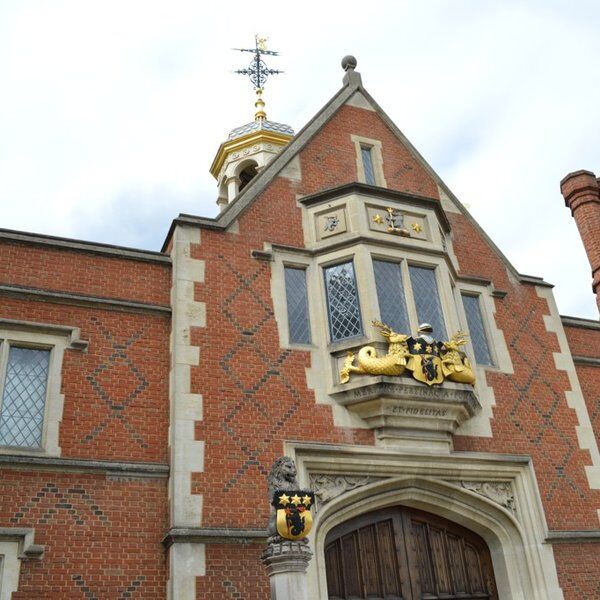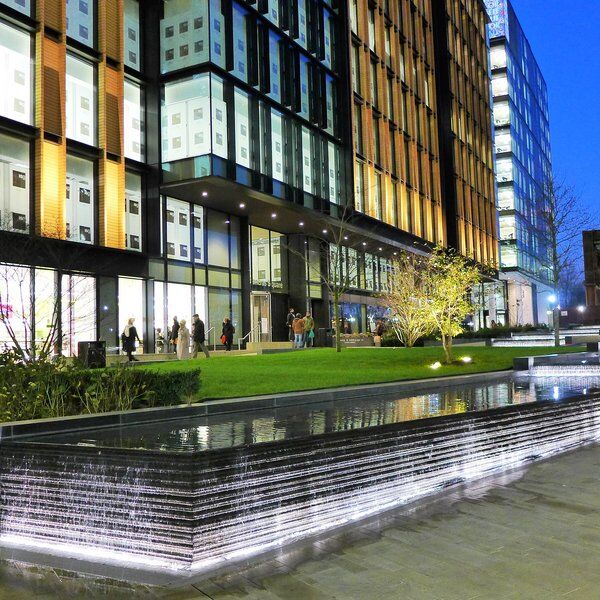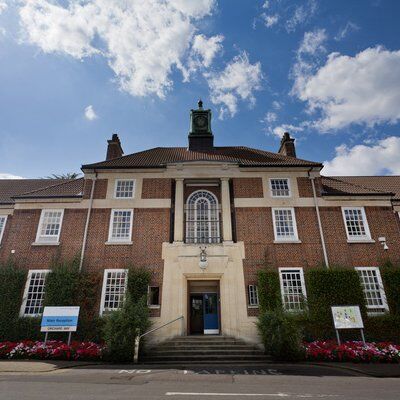Discover Duck Island Cottage
Duck Island Cottage is located in the picturesque St James’s Park in London. The 17th-century lodge was originally established as a decoy for wildfowl before being transformed into a whimsical architectural feature. The island on which Duck Island Cottage sits, has always been inhabited by birds, contributing to the park’s ecological diversity. By the late 19th century, its remote location even served as a discreet site for bomb disposal operations. Today, Duck Island Cottage functions as the office for the London Historic Parks and Gardens Trust and Duck Island provides sanctuary for 17 bird species that breed regularly, including mute swans and pelicans.

Duck Island Cottage in St James’s Park
Park Origins and Royal Transformations
So it would seem we cannot discuss Duck Island Cottage without mentioning the park in which it is situated. St James’s Park, a 23-hectare green space, was originally a marshland purchased by Henry VIII in 1532. It was then enclosed as a deer park for the Palace of Whitehall, before becoming a royal playground with the construction of St James’s Palace as a hunting lodge.
After spending much of its early life as a working decoy for royals hunting wildfowl, the marshy Tudor grounds of Duck Island and St James’s Park were transformed in 1612. It was then that King James I began landscaping the park, introducing exotic animals like crocodiles, camels, and birds, kept in newly built aviaries along what is now Birdcage Walk.
Under the reign of Charles II the park was transformed further to include a grand canal stretching nearly the entire length of the park. It was also opened to the public for leisure and spectacle. Despite its proximity to London, the area became very attractive to wildlife, with its famous pelicans (gifted by a Russian ambassador in 1664), and cranes among the residents.
As it continued to attract birdlife, an honorary titled was created, the “Governor of Duck Island”, which was bestowed by King Charles II and held by such as the French writer Seigneur de Saint-Évremond. These were bird-keepers who resided in Duck Island Cottage.

The 19th-Century Redesign
During the Regency era in the early 19th century, John Nash redesigned St James’s Park, into the romantic landscape we see today. The canal was reshaped into a naturally styled lake, with a reimagined island where the cottage would later stand. Meandering pathways replaced straight avenues, and Buckingham Palace was further developed to enhance the park’s grandeur.
During this redesign, the Ornithological Society of London played a vital role in preserving the park’s birdlife, advocating for measures to protect the resident waterfowl and improve their habitat.

Building Duck Island Cottage
In 1840, the Ornithological Society sought permission to construct a keeper’s cottage to house a bird keeper and serve as a hub for ornithological activities. Designed by architect John Burges Watson, the resulting cottage reflected a Swiss-inspired cottage orné style, with intricate bargeboards, ornamental ridge tiles, timber details, climbing plants. Its resulting whimsical, fairy-tale appearance contrasted with nearby Whitehall’s stately government buildings.
Completed in 1841, the cottage became a beloved feature of the park. The building's picturesque quality was amplified by its lush surroundings, which include weeping willows and waterfowl-friendly plantings that reflect its avian history. It is a testament to the Victorian’s fascination with nature and leisure.
Challenges and Changes
Despite its idyllic role, the cottage and its surrounding birdlife faced challenges. The lake’s draining in the mid-19th century led to the displacement of many birds, and maintenance of the cottage became increasingly costly. Over time, the island was connected to the mainland, diminishing its isolation but preserving its charm.

Features of St James’s Park
Recognized for its historical and cultural significance, St James’s Park is listed as a Grade I Historic Park. Its remarkable combination of natural beauty and historical depth attracts millions of visitors annually. Let's take a look at some of its defining features:
Natural Habitats: The Lake and Islands
Duck Island and St James’s Park has an array of habitats, including open grasslands, wildflower meadows, and reed beds. Over 1,200 trees provide shelter and shade, with iconic plane trees lining The Mall and Birdcage Walk. By the lake, willows, fig trees, and cherry blossoms add a touch of seasonal beauty.
Tip: Keep an eye out for one particular fig tree, which has been recognized as a “Great Tree of London.”
The lake itself, covering one-fifth of the park, is a vital sanctuary for over 40 species of water birds. Throughout the year, mallards, coots, and moorhens can be seen gliding across the lake, while seasonal visitors such as tufted ducks, teal, and pintails join them during migration periods.
Additionally, Duck Island and West Island serve as protected havens for small birds such as robins, blue tits, and wrens, as well as woodpeckers and tawny owls. The park’s iconic pelicans, fed daily between 2:30 pm and 3 pm, are a must-see attraction.
As dusk falls, keep an eye out for pipistrelle bats fluttering over the lake in search of insects. These tiny creatures, known for their voracious appetites, consume thousands of mosquitoes nightly. Butterflies, such as tortoiseshells, add a vibrant touch to the meadows, while dragonflies flit gracefully along the reed beds.

Conservation Efforts
To combat erosion and encourage biodiversity, wildflower mats and seeds have been strategically placed around the lake. These efforts not only create picturesque landscapes but also attract pollinators and provide shelter for birds and invertebrates.
The reed beds, particularly to the west of the lake, play a critical role in water purification and ecosystem support, making them an essential component of the park’s conservation strategy. The lake is also equipped with essential infrastructure, housing water pumps and treatment facilities for its fountains and ecosystem.
Views and Attractions
Visitors can cross the Blue Bridge, from which you can view the rest of the park's surroundings:
- Westward: A stunning perspective of Buckingham Palace framed by trees.
- Eastward: The Swire Fountain, Duck Island, Horse Guards Parade, and iconic London landmarks like the London Eye and The Shard.
For families, the park features a children’s playground with a large sandpit, ensuring fun for younger visitors.

Things to See and Do in St. James’s Park
There are plenty of things to see and do in St. James’s Park. Here’s a few ideas to get you started:
Explore Duck Island Cottage
After reading this article, we hope it's a no-brainer! Duck Island Cottage is the perfect spot to admire the park’s resident pelicans and other water birds. The fairy-tale architecture and tranquil surroundings make it a favorite among birders and photographers.
Witness Royal Pageantry
St. James’s Park is synonymous with royal tradition. Events like the Changing of the Guard and Trooping the Colour draw thousands of spectators annually. The Mall, the park's iconic ceremonial route, which culminates in the grand Victoria Memorial, provides unparalleled views of these grand spectacles. If you’re planning to attend, be sure to arrive early for the best vantage point.
Go for a Leisurely Walk
The park is a delightful destination for leisurely strolls. The Blue Bridge, arching over the lake, offers stunning vistas of Buckingham Palace and The London Eye. For a longer adventure, follow the Diana Memorial Walk, a seven-mile route that weaves through four Royal Parks.
Have a Picnic
With ample green space, St. James’s Park is an idyllic spot for a picnic. Visitors can enjoy refreshments from nearby kiosks or the elegant Storey’s Gate Café. For an even more relaxing experience—yes, it's possible—rent a deckchair and savor the peaceful atmosphere.
Art, History, and Monuments
St. James’s Park has an impressive collection of statues and memorials. From the flamboyant statue of Queen Elizabeth the Queen Mother to the simple elegance of the Boy Statue, the park invites visitors to uncover its storied past. History enthusiasts will also appreciate the proximity to landmarks like the Churchill War Rooms and the Household Cavalry Museum.

Tips for Visiting Duck Island Cottage and St James’s Park
- Best Time to Visit: If you’re here for the wildlife, the daily pelican feeding at 2:30 pm is a highlight. Spring offers spectacular views of blossoming cherry trees, while autumn showcases the park’s golden foliage.
- Accessibility: The park is centrally located and easily accessible by public transport. It’s an excellent stop for tourists exploring nearby landmarks like Buckingham Palace.
- Guided Walks: Enhance your visit with a guided tour to learn about the park’s history, wildlife, and hidden gems.
To discover another hidden gem that is tucked away in one of London’s historic parks, click here: Isabella Plantation - London, United Kingdom | CityDays.

Explore Beyond Duck Island Cottage with CityDays
If you’re interested in exploring other gardens throughout London, we think you will enjoy one of our CityDays Food Hunts and in particular, the Taste of Soho Mystery Picnic, London.
This unique scavenger hunt allows you to discover the vibrant tastes of Central London. Follow a trail of puzzles around the area's best cafes, delis and bakeries, collecting free picnic bits along the way.
Along the way, you and your teammates will solve clues that interact with the streets themselves to unlock fascinating facts along with your delicious prizes. The food hunt culminates in the enjoyment of your delicious picnic, in a charming secret garden!
We think you’ll love it but for more information on this tour, and our other London Scavenger Hunts click here: Top 12 Immersive London Treasure Hunts & Scavenger Hunts | CityDays.
















